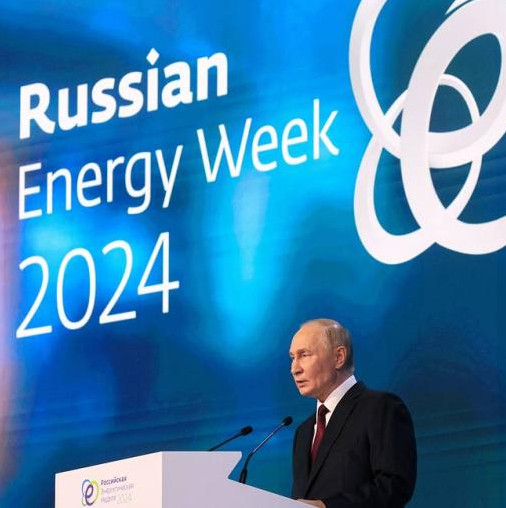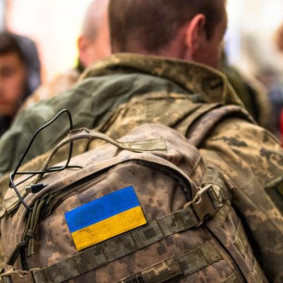1. In the opinion of the Russian side, the basic reference to item (16.1) of the Mechanism for Consultation and Cooperation as regards Unusual Military Activities, Chapter III, Vienna Document of 1999, contained in Georgian Note No. 06-333 of May 28, 2008, requesting an explanation for the alleged involvement of a Russian Air Force aircraft in the destruction on April 20 of a Georgian unmanned aerial vehicle (UAV) over Abkhazia is in principle unjustified.
This Chapter says that a participating State which has concerns about any unusual and unscheduled activities which are militarily significant may transmit a request for an explanation to another participating State “where the activity is taking place.” There were no such activities conducted on the territory or in the airspace of Russia, nor are there. The April 20 incident is exclusively a subject of bilateral relations between Georgia and Abkhazia, and related discussions must be conducted, first and foremost, with Abkhazia as one of the parties in conflict. Russian aircraft did not fly there.
But the conclusions presented by the Georgian side about involvement of a Russian military aircraft in that incident are based mainly on a video of the aircraft attack recorded by the spy UAV’s on-board camera and on some land-based radar images. Their authenticity evokes in the Russian side serious doubts, because:
the fact of violation by a Russian aircraft of the air border of Georgia has been neither established nor documented, which permits the Russian side to hypothesize that there might have been in the airspace a military aircraft of any nationality, including Georgia itself;
the quality of the above video materials does not enable identifying with even a slight degree of probability the type and nationality of this aircraft (it is not fortuitous that US and British experts are still unable to determine whether it was an SU-27 or MIG-29);
clearly traceable in a scrappy fragment of the video is the montage of three different episodes, which is borne out by the impossibility of exactly locating the area of the events, by an abrupt change of weather conditions and of the degree of illumination as well as by the low speed of the aircraft’s approach to the UAV;
the video footage of the air situation shown on the computer cannot be examined or analyzed in view of its unreadability, particularly where the target logs are concerned, and because of the absence of flight lanes of civilian planes, including on international air lines in the region;
despite the Georgian side’s claims that it fully controls the airspace of Abkhazia, the investigation materials lack data of an interception of radio communications between the pilot and the ground control station that conducted guidance, without which a successful attack on an air target by a modern fighter is practically impossible.
As a result, a request was forwarded to the Georgian side to present all the materials and evidences relating to the April 20 incident that it has, and first of all the above-mentioned video and radar records, for their verification by Russian specialists. Only in this case the investigation can bear an objective character.
2. Flights of UAVs belonging to the Georgian side have now been observed in the security zone for a long time. These flights are a gross violation of the Moscow Agreement on the ceasefire and separation of forces of 14 May 1994 and run counter to the strong urging of the UN Security Council “to refrain from any acts of violence or provocation, including political action or rhetoric, to comply fully with previous agreements regarding ceasefire and non-use of violence, and to maintain the security zone and the restricted weapons zone free of any unauthorized military activities“ (item 6 of UNSCR 1808).
The United Nations Observer Mission in Georgia (UNOMIG), in its report based on results of its investigation of the April 20 incident, also considers that reconnaissance missions by unmanned aircraft constitute “military action” and therefore contravene the Moscow Agreement. According to irrefutable data (fragments of aerial vehicles with identification numbers), moreover, Abkhaz air defense forces in the period 18 March-12 May this year already shot down seven spy planes, three of them recognized in the UNOMIG report as “Georgian Israeli-made UAVs.” Also there, it is indicated that “this kind of military intelligence-gathering is bound to be interpreted by the Abkhaz side as a precursor to a military operation, particularly in a period of tense relations between the sides“, and that „the Abkhaz side reported 16 UAV overflights since last August” (item 36 of the report).
The UAV downed on April 20 was identified as a Hermes 450 aerial vehicle belonging to Georgia. It was its overflight that became the primary cause of the incident. Unfortunately, the Georgian side even after this not only did not cease provocative overflights of its drones, but began to build up their number as well. How can the Georgian leadership explain what are now not isolated, but massive, systemic violations which fan tension even more in the conflict zone?
As the Georgian side denies loss of six out of the seven drones, the legitimate question arises whether this means that it lacks materials of objective control regarding UAV losses? In this case the capacity of the entire system of control of the airspace of Georgia is under doubt.
The Russian side expects from the Georgian side termination of such provocative flights in the security zone and in the restricted weapons zone, and stresses the necessity of strictly fulfilling its obligations under the Moscow Agreement and following the UN Security Council’s urgings.
3. In the last few years, representatives of the CIS Collective Peacekeeping Force (PKF) and UNOMIG have recorded systematic violations by the Georgian side of the Moscow Agreement on the ceasefire and separation of forces of 14 May 1994, the Protocol of the Gali Meeting of the Georgian and Abkhaz Sides on Stabilization of the Situation in the Security Zone of 3 May 2000, and relevant Security Council resolutions.
In particular:
- 2007 saw 158 incidents of flights by Georgian warplanes over the security zone, and there were flybys of Georgian SU-25 attack planes along the separation line on April 5 and 13 this year;
- on May 12, 2008 an intrusion into the territorial waters of Abkhazia by detachments of Georgian warships was recorded;
- in the period 18 March-12 May, in the conflict zone, Abkhaz air defense forces downed seven Georgian unmanned aerial vehicles carrying out flights for reconnaissance purposes over the territory of Abkhazia and the security zone of the CIS PKF;
- on July 25, 2006 militarized units of Georgia’s armed agencies were introduced into the upper part of the Kodori Gorge and their strength is now about 2700 men (of them up to 1000 interior ministry troops, and up to 1700 defense ministry troops);
- during 2007, the Georgian side kept transferring through CPKF Observation Post (OP) No. 302 personnel, weapons and military equipment for the purposes of concentration and to replace police units in the upper part of the Kodori Gorge;
- on July 5, 2007 three military truck convoys of the Georgian Interior Ministry passed through OP No. 302;
- in August 2007 the Georgian side carried out measures to develop the road infrastructure in the upper part of the Kodori Gorge with the aim of increasing the operational possibilities for building up the group of Georgian armed agencies in Upper Kodori;
- between October 15 and November 9, 2007 205 Georgian interior ministry trucks carrying personnel and equipment and eleven gasoline tank trucks passed through CPKF OP No. 302;
- an intensive transfer by road and air into the upper part of the Kodori Gorge of weapons, fuel and lubricants, food and other logistic supplies as well as of armed agencies’ personnel has been observed since early April this year;
- on April 6 this year Georgian aviation flied fifteen AN-2 aircraft sorties and twelve MI-8 helicopter sorties into the upper part of the Kodori Gorge (they delivered up to 150 troops);
- the Georgian side has repeatedly hindered movement of peacekeeping patrols and CPKF truck convoys delivering material supplies to the peacekeeping facilities (a breach of article 4 of the Moscow Agreement);
- as of May 29, 2008, the strength of units of Georgia’s armed agencies in the Zugdidi District had increased to more than 1100 men (under item 2 of the Protocol of the Gali Meeting of the Georgian and Abkhaz Sides on Stabilization of the Situation in the Security Zone of 3 May 2000, their strength must not exceed 600 men);
- in September 2007 Georgian interior-ministry special forces troops made an attack on the mountain base camp of the antiterrorist center of the Interior Ministry of the Republic of Abkhazia, killing two Abkhaz servicemen, wounding four, capturing seven and subsequently taking them to Tbilisi;
- in March this year, in the OP 210 area, an armed group of about 60 men of Georgia’s interior ministry entered the security zone and for two hours illegally conducted surveillance.
As a result the Russian side has strongly urged the Georgian side to avoid violating the Moscow Agreement on the ceasefire and separation of forces of 14 May 1994 in the future and to sign without delay with Abkhazia a document on the nonuse of force and on security guarantees, as provided for in item 7 of UN Security Council resolution 1808.









